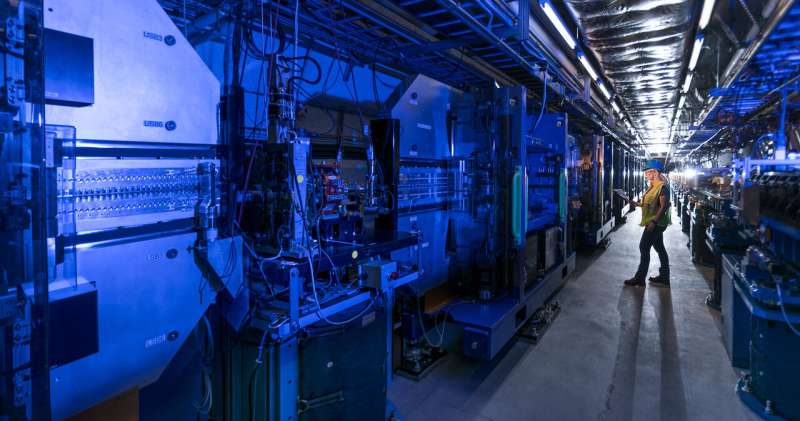Credit: SLAC National Accelerator Laboratory
Modern X-ray laser facilities like the Linac Coherent Light Source (LCLS) at the Department of Energy's SLAC National Accelerator Laboratory allow scientists to study how nature behaves at ultrasmall and ultrafast scales. However, the individual X-ray pulses are unstable, fluctuating from shot to shot, and produce a lot of background noise that can obscure the signal in high-resolution experiments.
Now, SLAC scientists have developed a method to produce brighter X-rays that are more stable and coherent, with wavelengths that are more in sync with one another. This could increase the efficiency of data collection and pave the way for new kinds of experiments. Their results were recently published in Physical Review Letters.
Tools for science
For the last several years, the team has been looking for ways to improve the performance of the LCLS by improving the quality of its pulses.
"Producing a perfect X-ray laser is one of the ultimate goals in our community." says co-author and SLAC scientist Zhen Zhang. "We wanted to find a way to make X-ray pulses resemble those from a classical optical laser, which are both stable and coherent."
Bob Schoenlein, LCLS Deputy for Science, says that this research will make XFELs even more important and versatile tools for science.
"This is a very promising approach for controlling the coherence properties of LCLS X-ray pulses," he says. "It will enable studies of complex materials and molecular systems with exquisite resolution in both time and energy."
Best of both worlds
The researchers had been studying existing approaches to generate cleaner X-ray pulses, such as filtering the noisy pulses and re-injecting them into the XFEL using a concept called "self-seeding," but found that there is a fundamental trade-off between highly coherent pulses and highly stable ones. In the traditional self-seeding method, it was not possible to have both at once.
They realized that they needed to take an entirely different approach to sidestep this problem. That's when lead author and SLAC scientist Erik Hemsing had the idea to stretch ultrashort X-ray pulses, whose unique properties allow the researchers to stabilize and purify the pulses.
"Instead of filtering the long, noisy pulses as is done in conventional self-seeding, we realized that we should instead first produce ultrashort coherent pulses and then stretch and amplify them," Hemsing says. "This way, according to our studies, we are able to significantly increase the stability and the coherence at the same time."
The concept relies on the fact that the ultrashort pulses can be much less noisy and more coherent than long pulses, particularly if they reach their maximum power. The problem is that the short pulses do not carry much energy and are not ideal for certain high-resolution scientific applications. The researchers found a way to filter these pulses, then amplify them by a factor of 10,000.
"It allows us to get the results we want without major modifications to the existing setup," says co-author and SLAC research associate Alex Halavanau.
Putting it to the test
To follow up on this research, the team hopes to test the idea at LCLS. In the future, Halavanau says, they would like to extend the technique to more energetic "hard" X-rays, and use new, customized soft X-ray pulses enabled by this technique to better understand the physics of atoms, photons and electrons.
Zhirong Huang, director of the SLAC Accelerator Research Division, says: "We look forward to putting this idea to work in the new soft X-ray undulator that will come online soon for LCLS-II."
More information: Erik Hemsing et al. Enhanced Self-Seeding with Ultrashort Electron Beams, Physical Review Letters (2020). DOI: 10.1103/PhysRevLett.125.044801
Journal information: Physical Review Letters
Provided by SLAC National Accelerator Laboratory
























